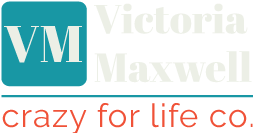As an HR manager you already know mental health issues are taking a toll in your workplace. But you may be at odds as to how to effectively and comfortably address them. How do you get comfortable talking about mental health issues in the workplace? You need concrete tools to help staff feel comfortable reaching out for help and skills to offer co-workers so they’re equipped to support a colleague.
The good news is you can do this with relatively little financial investment.
It’s a process, takes commitment and consistency, but creating exceptionally healthy workplaces always do. And I bet, as an HR expert, you’re already passionate about creating positive changes for the people and organisation you support.
People do and can recover from mental illnesses with timely and appropriate treatment. People, like myself, return to living rich, full lives and have satisfying and productive careers. I was diagnosed with bipolar disorder and generalised anxiety disorder. I was extremely depressed and even suicidal for a time. But, with the right support, and that meant the right support at work, I returned to be a productive employee and eventually opened my own thriving business.
You are part of the solution.
Below are three resources that will help. Begin to implement some of the following and your workplace ecology will positively shift. You’ll see staff flourish, along with the bottom line.
1. The Wizards of O.A.R.S. (Observe, Approach, Refer, Support) free e-guide.
I created this e-guide to help individuals become comfortable when wanting to support an employee or co-worker. It’s a step-by-step framework of what to do when a colleague may be dealing with a mental health issue. Read it and see if it brings more confidence to your conversations about mental health issues in your workplace.
Oars bring balance, stability and direction to a boat. So too can people give support and guidance to those around them who may be facing mental health issues. The following is for non-urgent situations. If you feel the individual is at risk of harming themselves or others, immediate care should be sought at the nearest emergency ward. Download the guide for a detailed description of each step and more tips.
Observe – changes in behavior, length present
Approach + Listen– discuss concerns in terms of behaviour. Focus on actions
- I’ve observed that or I see that… (ie: you’re not joining us for lunch any more or you’ve been missing meetings or you’ve had more accidents lately)
- I’m concerned… (ie: you don’t seem like yourself or you seem to have less energy than usual…)
- How can we support you at work to help improve things for you or What can we do to improve things at work for you?
- Then…LISTEN (Active listening skills are needed – Here’s a short video that gives tips on this particular kind of listening)
Refer – to resources in the workplace and/or community (i.e. EAP, counselling, support groups, etc.) Also please visit the resource page to download a Mental Health Resource Guide for additional tools.
Support – as best as you can. Use active listening skills (see above).
2. Proactively supports employees’ mental health by implementing some of the evidence-based guidelines of a psychologically healthy and safe workplace.
The Mental Health Commission of Canada has endorsed these standards as a way of working towards and positively affecting the mental health of your most valued investment: your workers.
Standard for Psychological Health and Safety in the Workplace materials can be found here.
3. Check out Mental Health First Aid programs, here. Like physical first aid courses, they teach how to confidently help someone dealing with a mental health issue or crisis until the appropriate support arrives.
As a human resource manager, you juggle many responsibilities. You have the power to influence the work environment and the health and productivity of the staff. Use your power for good and create a legacy that includes creating a mentally flourishing workforce.
If you’d like a customized interactive workshop based around it, please contact me at [email protected]
© Victoria Maxwell





Leave a Reply
Want to join the discussion?Feel free to contribute!